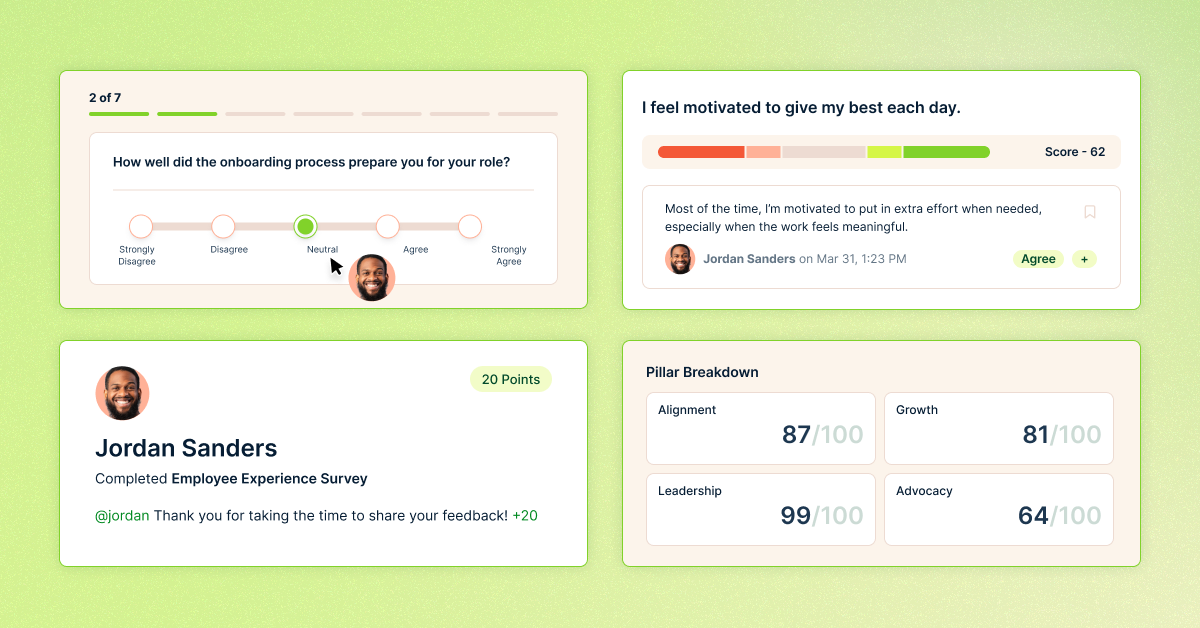Workplace culture
.svg)
Workplace Culture
What is Workplace Culture?
Workplace culture refers to the shared values, beliefs, behaviors, and norms that shape the daily experiences of employees within an organization. It encompasses the informal guidelines that dictate how employees interact with one another, the organizational structure, management styles, and the overarching mission and vision of the company. Workplace culture influences everything from communication styles to decision-making processes, playing a crucial role in how employees perceive their roles and the organization as a whole.
Why is Workplace Culture Important?
Workplace culture is vital for several reasons:
- Employee Engagement: A positive culture fosters higher levels of employee engagement, leading to increased productivity and job satisfaction. Employees who feel aligned with their organization’s values are more likely to be motivated and committed to their work.
- Attraction and Retention of Talent: Companies with a strong, positive culture are more attractive to potential employees. A healthy workplace culture reduces turnover rates, as employees are more likely to stay with an organization that aligns with their values and provides a supportive environment.
- Company Performance: There is a direct correlation between workplace culture and organizational performance. A strong culture can enhance teamwork, innovation, and efficiency, driving the company toward its strategic goals.
- Workplace Environment: A well-defined culture contributes to a positive workplace environment, reducing conflicts and enhancing collaboration. This environment encourages openness, diversity, and respect among employees.
- Organizational Health: A robust workplace culture promotes overall organizational health, enabling companies to navigate challenges effectively, adapt to change, and maintain a competitive edge in their industry.
How to Implement Workplace Culture?
To effectively integrate workplace culture into an organization, consider the following actionable steps:
- Define Core Values: Collaboratively identify and articulate the core values that reflect the organization’s mission and vision. Ensure these values resonate with employees at all levels.
- Communicate Regularly: Foster open communication about workplace culture through regular meetings, newsletters, and training sessions. Transparency helps reinforce the desired culture.
- Lead by Example: Leadership should embody the cultural values of the organization. When leaders demonstrate commitment to the culture, employees are more likely to follow suit.
- Encourage Employee Involvement: Involve employees in cultural initiatives and decision-making processes. This inclusion fosters a sense of ownership and reinforces commitment to the culture.
- Create Recognition Programs: Establish programs that recognize and reward behaviors aligned with the organization’s cultural values, encouraging ongoing engagement and commitment.
Benefits of Workplace Culture
Embracing a strong workplace culture offers numerous advantages, including:
- Higher Employee Satisfaction: Employees who feel valued and aligned with their organization’s culture report greater job satisfaction.
- Increased Productivity: A positive culture motivates employees to perform at their best, leading to enhanced productivity.
- Stronger Team Cohesion: A shared culture fosters camaraderie and collaboration, resulting in stronger team dynamics.
- Improved Innovation: Cultures that encourage risk-taking and creativity promote innovative thinking and problem-solving.
- Enhanced Reputation: Companies known for their strong workplace culture often enjoy a positive reputation, making them more appealing to potential clients and partners.
Common Challenges with Workplace Culture
Organizations may face several hurdles when implementing workplace culture, including:
- Resistance to Change: Employees may be resistant to changes in culture due to established habits. Overcoming this requires patience, clear communication, and sustained leadership support.
- Lack of Clarity: If the cultural values are not clearly defined, employees may struggle to understand what is expected of them. Regular training and reinforcement can help clarify these values.
- Inconsistent Leadership Behavior: Leaders who do not embody the cultural values can create confusion and distrust. It’s essential to ensure that leadership models the desired behaviors consistently.
- Diverse Perspectives: In diverse workplaces, differing perspectives on culture can lead to misunderstandings. Encouraging open dialogue and inclusivity can help bridge these gaps.
By addressing these challenges proactively, organizations can successfully cultivate a workplace culture that not only enhances employee engagement but also drives organizational success.





